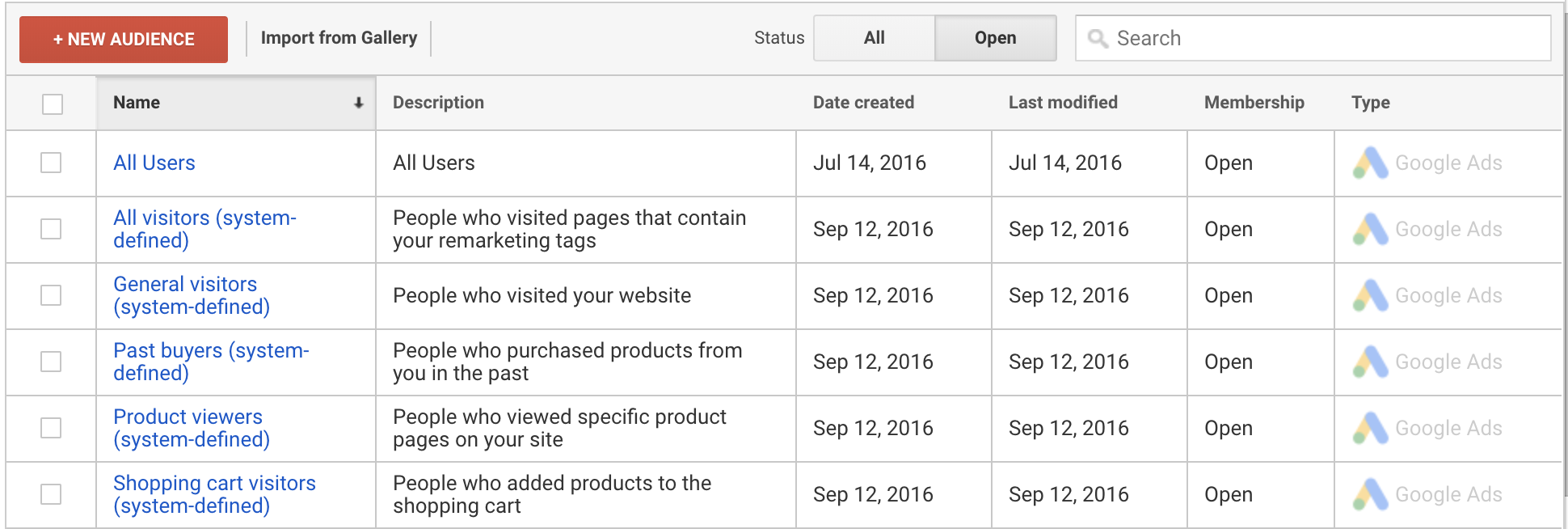Harnessing Remarketing in Google Analytics: A Comprehensive Guide
Taking advantage of remarketing in Google Analytics uses services a calculated side in reaching out to potential consumers. This guide will lose light on the necessary actions entailed in using the complete potential of remarketing in Google Analytics, leading to improved advertising and marketing end results.
Recognizing Remarketing in Google Analytics
Remarketing in Google Analytics permits services to tactically target customers who have actually formerly communicated with their web site or mobile application. By leveraging information from Google Analytics, companies can produce customized remarketing checklists based on user behavior, such as pages seen, activities taken, or certain objectives attained. This powerful device makes it possible for services to re-engage with individuals that have revealed passion in their products or solutions, eventually enhancing the probability of conversion.
Recognizing the different kinds of remarketing approaches is essential for an effective campaign - What Is “Remarketing” In Google Analytics?. Google Analytics uses different alternatives, consisting of basic remarketing, dynamic remarketing, and remarketing lists for search ads (RLSA) Each kind offers an one-of-a-kind purpose and can be customized to satisfy details advertising and marketing goals
Furthermore, assessing the efficiency of remarketing projects is vital for optimizing outcomes. Google Analytics offers important understandings right into the performance of various remarketing approaches, enabling companies to make data-driven decisions and improve their targeting method. By constantly changing and keeping an eye on remarketing initiatives based on analytics information, companies can make best use of ROI and drive success in their marketing initiatives.
Setting Up Remarketing Campaigns

After establishing up audience listings, the following action is to connect Google Analytics with Google Advertisements. By linking these 2 platforms, businesses can seamlessly transfer target market checklists from Google Analytics to Google Ads for remarketing objectives. This assimilation permits even more accurate targeting and better campaign performance.
When the accounts are linked, services can produce remarketing campaigns in Google Ads using the audience provides formerly defined in Google Analytics. These projects can be personalized with particular advertisement creatives, messaging, and bidding approaches to effectively re-engage with previous site visitors and drive conversions. By adhering to these actions, businesses can leverage the power of remarketing to enhance their advertising initiatives and raise ROI.
Making Use Of Target Market Division Techniques

Predefined segments in Google Analytics allow you to quickly assess common target market classifications fresh individuals, returning individuals, or individuals More hints who finished a certain goal on your internet site. Custom-made sectors, on the various other hand, allow you to create one-of-a-kind sections based upon particular criteria that are necessary to your service purposes. Dynamic remarketing lists instantly change based upon individual actions, revealing customized advertisements to customers who have engaged with your site in particular means.
Studying Remarketing Performance Metrics
Upon evaluating the effectiveness of remarketing campaigns in Google Analytics, the analysis of vital performance important link metrics gives valuable insights into target market involvement and conversion rates. By diving into metrics such as click-through rates (CTR), conversion prices, price per acquisition (CERTIFIED PUBLIC ACCOUNTANT), and return on ad spend (ROAS), online marketers can gauge the success of their remarketing initiatives. Evaluating these metrics enables online marketers to optimize projects, refine audience targeting, and allot budgets successfully to boost overall remarketing performance.
Enhancing Remarketing Strategies
When refining remarketing methods in Google Analytics, concentrating on target market segmentation is extremely important for accomplishing project success. By splitting your audience into specific segments based on their actions, demographics, or rate of interests, you can tailor your advertisements better to each group. This targeted technique increases the probability of engaging customers that have currently shown rate of interest in your services or products, causing higher conversion prices.
An pop over to these guys additional vital aspect of enhancing remarketing techniques is continually testing and refining your projects (What Is “Remarketing” In Google Analytics?). A/B screening different advertisement creatives, messaging, or offers can assist you recognize what reverberates ideal with your audience and drives the most conversions. By evaluating the efficiency of these tests in Google Analytics, you can make data-driven choices to optimize your remarketing efforts even more
Additionally, leveraging dynamic remarketing can considerably enhance your project results. This function permits you to show tailored ads to customers based on their previous communications with your site, showcasing products or services they have actually formerly seen. By supplying tailored material to users based on their actions and rate of interests, vibrant remarketing can help increase engagement and drive conversions.
Final Thought
In conclusion, taking advantage of remarketing in Google Analytics is a calculated method to target users who have previously involved with a site. By producing personalized audience checklists and making use of target market division approaches, services can maximize remarketing advocate enhanced conversion rates. Evaluating performance metrics and constantly optimizing methods are crucial for maximizing the effectiveness of remarketing efforts.
Google Analytics uses various options, including common remarketing, vibrant remarketing, and remarketing checklists for search advertisements (RLSA)After setting up audience lists, the next step is to link Google Analytics with Google Advertisements. By linking these two systems, businesses can effortlessly transfer target market checklists from Google Analytics to Google Ads for remarketing purposes.Once the accounts are linked, organizations can produce remarketing campaigns in Google Advertisements making use of the audience details formerly defined in Google Analytics.When refining remarketing strategies in Google Analytics, focusing on audience segmentation is vital for attaining project success.